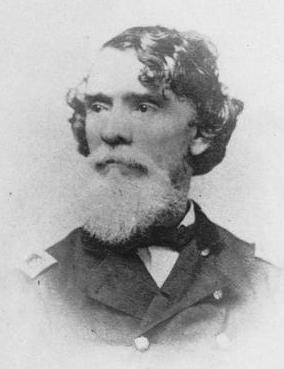Arthur Tracy Lee (Arthur Tracy Lee)

US Army Colonel, Artist. He was commissioned as second Lieutenant in the 5th US Infantry in October 1838, and transferred to the 8th US Infantry the following month. After service in Wisconsin and Florida, he transferred to Texas in 1845 as part of the “Army Of Occupation”, a force designed to protect white settlers on Indian territory. By 1849 he had risen to the rank of Captain and his regiment was stationed variously at Camp Worth, Fort Croghan and Fort Martin Scott. At the start of the Mexican War, he was given command of an 8th Infantry company whom he took through the battles of Palo Alto and Resaca De La Palma. In 1854 Lee and his men were sent still further West where they were instructed to establish a camp in the Davis Mountains. Here, Lee began to paint and sketch the scenery around Fort Davis, becoming one of the first to extensively record images of the American South West in a time before photography. In 1858, Lee left Fort Davis with two companies to establish Fort Quitman, over 100 miles further West again, where he continued to paint the new territories he encountered. He was ordered to assist with defense on the Mexican border during the Cortina Wars, although he arrived after the skirmishes were over and did not see active duty. By the time of Civil War, he was stationed at Fort Stockton and was captured by Confederate forces while trying to get his men out of Texas. He was released on parole, agreeing to not take up arms against the Rebels, but as soon as it expired, he rejoined the Union forces, served with the Army of teh Potomac and took part in the battle of Gettysburg, where he was wounded in the ankle and hip. His wounds were serious enough to keep him from further action but he was breveted Lieutenant Colonel in 1863 for his service at Gettysburg, and to full Colonel in 1869 in recognition of his decades of service to the US Army. After the Civil War, he became Governor of the National Soldier’s Home in Washington DC, and further publicly demonstrated his creative talents, hich also included poetry, music and landscape design, with the publication of “Army Ballads And Other Poems” in 1871. Later in the 1870’s he retired to Rochester, NY, where his daughter and son-in-law resided. In 1976, a volume of his groundbreaking paintings was published with text by W. Stephen Thomas, entitled “Fort Davis and the Texas Frontier”. (bio by: Mount Hope NY)
Born
- January, 01, 1970
- USA
Died
- December, 12, 1879
- USA
Cemetery
- Mount Hope Cemetery
- USA

